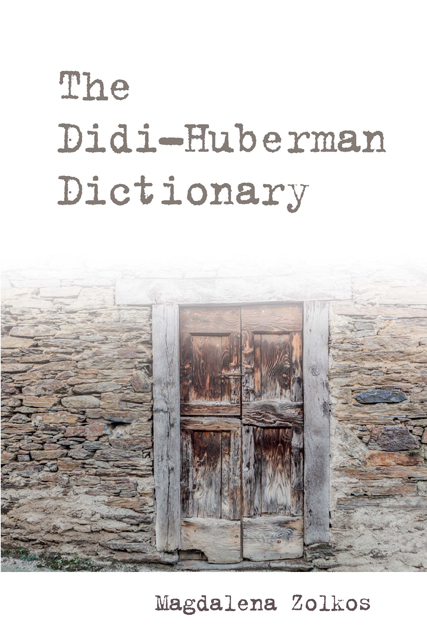Book contents
- Frontmatter
- Contents
- Acknowledgements
- List of Abbreviations for Translated Works by Georges Didi-Huberman
- Introduction: How to Read Dictionaries Diagonally, or ‘The Secret Relations of Things’
- Entries A–Z
- List of Works by Georges Didi-Huberman
- List of Scholarly Publications on Georges Didi-Huberman in English
- Notes on Contributors
Entries A–Z
Published online by Cambridge University Press: 02 June 2023
- Frontmatter
- Contents
- Acknowledgements
- List of Abbreviations for Translated Works by Georges Didi-Huberman
- Introduction: How to Read Dictionaries Diagonally, or ‘The Secret Relations of Things’
- Entries A–Z
- List of Works by Georges Didi-Huberman
- List of Scholarly Publications on Georges Didi-Huberman in English
- Notes on Contributors
Summary
AFTERLIFE
Michaela Bstieler
The afterlife according to Didi-Huberman is the memory that is ingrained in an image. In order to understand an image, one must take into account its specific historicity, which is conveyed through the paths and detours of time. Didi-Huberman shares this conviction with Aby Warburg, who was interested in the discontinuities and overdeterminations of history throughout his work and tried to consider the ‘powers of the image’ along the deposited material of an unconscious memory (Warburg, 1998: 172). Even more firmly than Warburg, Didi-Huberman argues for a method of historical reconstruction that deals with the presence of the past under the sign of a non-linear temporality. The afterlife in particular cannot be understood as latently persisting in concrete images, motifs and paradigms, as if it could outlast the times like a trace (Derrida, 1982). On the contrary, Didi-Huberman’s concept of afterlife emphasises a form of time that disorients past, present and future, opening them towards anachronism. Thus, the afterlife can only be adequately grasped if ‘temporal periods are no longer fashioned according to biomorphic stages, but, instead, are expressed by strata, hybrid blocks, rhizomes, specific complexities, by returns that are often unexpected and goals that are always thwarted’ (SI, 12).
The afterlife refers to a ‘psychological time’ (SI, 178) that always subverts the notion of historical time. This is one of the key theses of L’Image survivante (2002b; SI), in which Didi-Huberman examines the affective aspects of afterlife. Hence, Didi-Huberman uses the Freudian notion of the symptom (see Freud, Sigmund; psychoanalysis) as a model to not only mark an ‘entangled’ temporality, but also to address the plasticity of a body ‘agitated by conflicts, by contradictory movements: a body agitated by the eddies of time. It is a body from which there suddenly springs forth a suppressed image’ (SI, 198). The symptom thus possesses an extreme mobility: it forms configurations that are subject to repression, that is, remain latent, and yet retain a capacity to act. In this dialectic between fixation and distortion, disappearance and emergence, the entire dynamic of the afterlife is implied. Just like the symptom, the afterlife is to be endlessly interpreted (BI) and defies symbolic translation, as Didi-Huberman argued in Devant l’image (1990a; CI).
- Type
- Chapter
- Information
- The Didi-Huberman Dictionary , pp. 7 - 226Publisher: Edinburgh University PressPrint publication year: 2023



